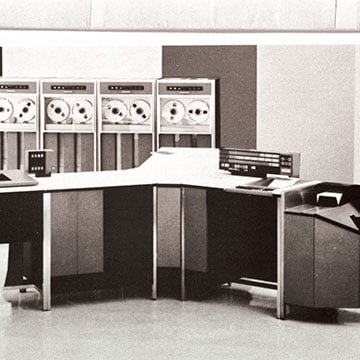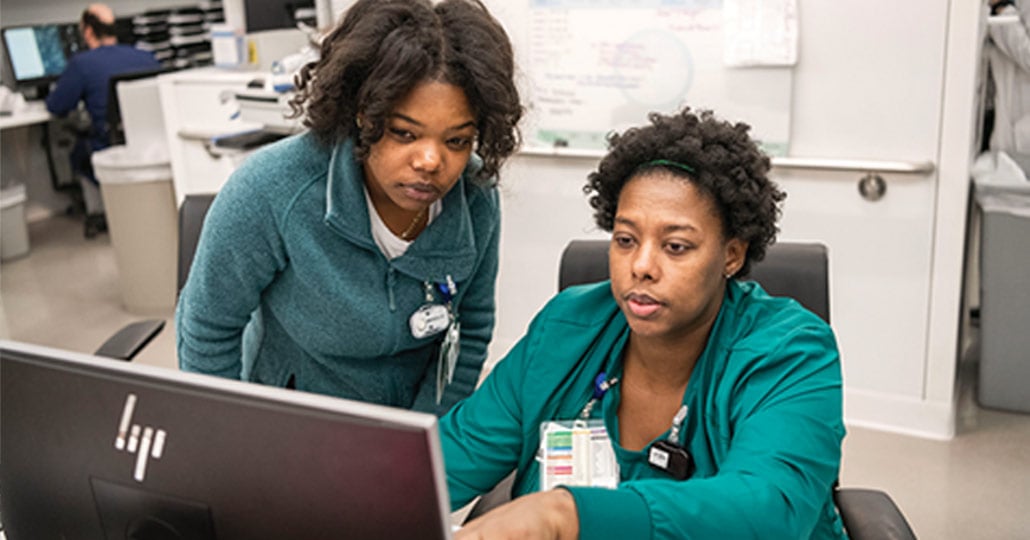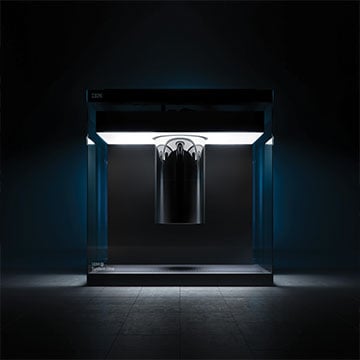THEN NOW NEXT
The Cyber House Rules
by Jill Stefancin
Photo: Marty Carrick

Photo: Cleveland Clinic Archives
Then
When Cleveland Clinic debuted the first COMPUTERIZED DATA REGISTRY for cardiac diagnosis and care in 1972, it was a revolution in healthcare. Pioneered by William Proudfit, MD; William Sheldon, MD; Floyd Loop, MD; and Emily Wagstaff, RN, the database replaced paper records of procedures and outcomes, marking the beginning of data-driven care. It remains the largest continuous cardiovascular registry in the world.
Now
Today, computers are an INTEGRAL PART OF HEALTHCARE. The electronic medical record has become commonplace. Physicians and researchers utilize various software applications for data collection and analysis, as well as imaging computing such as MRI and CT scans. Thanks to computers, research data can be collected and analyzed quickly, speeding the pace of clinical trials. Computers also come into play when creating everything from medical devices to 3D models that aid in complex surgeries. In fact, it’s hard to imagine healthcare without computers.

Photo: Marty Carrick

Photo: IBM
Next
Cleveland Clinic and IBM have partnered to establish the DISCOVERY ACCELERATOR, a new center dedicated to advancing healthcare and life sciences through the use of artificial intelligence, high-performance computing on the hybrid cloud and quantum computing technologies. “Our researchers will have access to top-notch computer technology, including an on-site quantum computer that has never before been used in healthcare,” says Lara Jehi, MD, Cleveland Clinic’s Chief Research Information Officer. “This technology will allow us to complete our scientific discoveries in record times.” The Discovery Accelerator is a cornerstone of the new Cleveland Innovation District, where philanthropy will be critical to funding big ideas for transforming medicine and training the workforce of the future.
